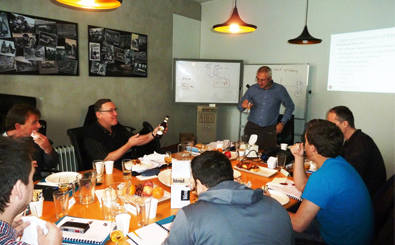
Vince Costanzo from Costanzo Brewing Consultants discusses some of the myths that go around in homebrewing scenes, which are unfortunately taken up when some of those brewers turn pro.
Many years ago homebrewing was quite rudimentary. Some people tell me that they brewed in plastic rubbish bins and used yeast that was available then, anything but brewers’ yeast. There was no temperature control and consequently the beer often tasted quite awful.
Fortunately, today there are so many good ingredients and many are stored in the correct way. The knowledge is far superior to those times but not without so many variations that can leave you wondering.
I see that there are some myths and misconceptions that abound at homebrewing level, which unfortunately may get carried into the microbrewing world.
Some of these issues are as follows:
- Beer becomes better with a certain amount of aging
Although we may need to mature beer in order to remove some unwanted flavours such as diacetyl, that butterscotch flavour, it is a relatively short period of time, one or two days.
Some brewers report a better smoother flavour after weeks or even months of ‘maturing’.
A new brewer needs to distinguish good flavours from bad. Not knowing what is in your beer, in terms of flavour can lead one to think that with prolonged aging there is in fact a better outcome.
If we are able to identify unwanted flavours we should go back to the brewing process and make necessary changes that will lead to only good flavours in the beer and hence the unnecessary need to use aging as the tool to remove them, leaving a fresher more interesting beer.
- Craft beer making does not leave room for adjuncts, other ingredients producing fermentative sugars
Early on, the home craft beer movement wanted to show they were different from mainstream producers so they made a song and dance about not using such things as cane sugar.
In fact, a myth spread that said that when using a can of extract to avoid using cane sugar as this lead to what was called ‘Kit Tang’. To avoid this you would use dextrose or dry malt extract.
In short, it did not matter what you used as the secondary ‘sugar’, you almost always got this tangy taste.
My conclusion was then that the malt extract concentrate itself is the likely cause.
- Filtration removes flavour
Not many homebrewers and microbrewers filter any of their beer. The rationale has been that it removes too much flavour. In fact, if done correctly, the only thing it removes is yeast. By doing this the beer can come alive and show ‘hidden’ flavours. If the beer is well made and contains no off-flavours then it can be an asset, especially in the case of lagers etc. where clean, crisp flavours are required, perfect for summer drinking.
There are many more myths abounding and space limits what we can discuss here. But suffice to say that if you are thinking of going into the craft brewing scene there are many myths and facts that need to be considered in order for you to make tasty, consistent beer.
